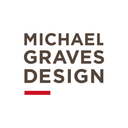No Products in the Cart
The Most Accessible Design Brand
Brand Story



Authentic Pioneering Legacy
Few are credited with spearheading a single design movement; Michael Graves Design, well known throughout the world for design excellence, led three.

Humanism
In the 1980s, Michael Graves redirected the design conversation away from abstract modernism toward a humanistic approach to architecture and design, that among other things, brought color and art back into the experience of architecture and product design. We think of this as cognitive accessibility.

Design For All
In the 1990s, our partnership with Target defined America's expectation that great design should be available to everyone. Design became a corporate strategy, and the Democratization of Design was born. Financial accessibility was achieved.

Delight For All
Over his last decade, Michael became a passionate advocate among the disabled and we used the power of design to improve healthcare experiences for patients, families and clinicians. Our focus became physical accessibility. We’ve delivered on this promise with Stryker, CVS, Pottery Barn, and MichaelGravesDesign.com. We call it Delight for All.Since then, Michael Graves Design has been sold at retailers including Target, HomeGoods, Williams Sonoma, HSN and countless others. And now, its also available right here at MichaelGravesDesign.com.


